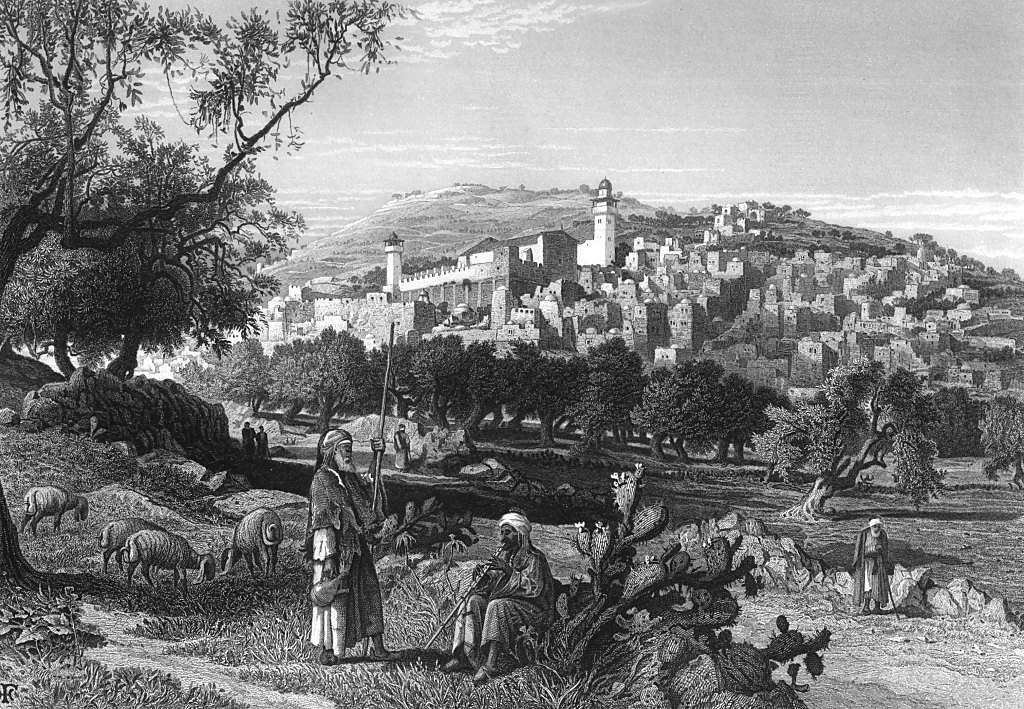
HEBRON.
GOING south from Jerusalem some twenty miles by the road leading through Bethlehem, the traveler in the Holy Land comes to the city of Hebron, situated among the mountains of Judah. This is the most ancient town of Palestine, and has been known by different names at different times in its history. It was built seven years before Tanis, the capital of Lower Egypt, and was at least two hundred years old when Abraham entered the land of Canaan. This would make it about four thousand years old at the present time.
It was first called Kirjath-Arba,—the city of Arba, who was the father of the race of giants called Anakim. The plain of Mature was near by the city, and in this plain was the oak beneath which Abraham so often pitched his tent, and where he sat when he was visited by two angels of the Lord just before the destruction of Sodom. The city, too, seems to have been called by the name Mamre, for some time after Abraham's first sojourn in the plain. It was here that Abraham bought the cave of Machpelah, in which to bury Sarah, his wife; the same cave afterwards received the remains of the patriarch himself, and of his descendants Isaac and Jacob, and their wives, Rebekah and Sarah.
In the conquest of Canaan by Joshua, the Anakim were driven out of the city after much labor, and the place was made one of the cities of refuge.
In the time of David the city was called Hebron, and the shepherd king made it the seat of his government during the seven years that he reigned over the tribe of Judah alone. It was here that David slew the murderers of Saul's son, Ishbosheth.
The pool over which he hung their dead bodies, still exists in a good state of repair. It was to Hebron that Absalom went to be anointed king, and establish an insurrection against his father.
After the time of Solomon the city suffered two or three pillages, but owing to its favorable situation on the road from Jerusalem to Beersheba, it each time recovered its beauty and importance.
At the present day it is called by the Arabic name, El-Khulil meaning "the friend," that is, of God, which is the same name that the Moslems give to Abraham. It is now an unwalled town of about eight thousand inhabitants, only seven hundred of whom are Jews, the rest being Turks and Arabs.
Besides being the oldest city of Palestine, it is also the highest, being two thousand eight hundred feet above the Mediterranean Sea. It lies in the narrow Valley of Eschol, so noted for its vineyards, groves of olives, and other fruit trees. It was from this valley that the spies obtained the huge bunch of grapes, which required two men to carry it.
The streets of the city are narrow, and •crooked, and the houses are built of white stone, with little domes on the top, which give them quite a picturesque appearance from the neighboring hillsides.
Large quantities of glass lamps and colored rings are manufactured here; also leathern bottles, raisins, and a grape syrup, called "dibs."
The city contains, besides the citadel, eight mosques and two synagogues. But the most interesting structure of all is the Mosque of Abraham, or the Haram.
This building can be seen to the left in the picture, and is said to contain the very cave in which lies the bodies of the three patriarchs.
No Christian is allowed to enter the building, but there is little doubt but that the mosque covers the veritable resting place of these first sojourners in the Land of Promise.
E. B.